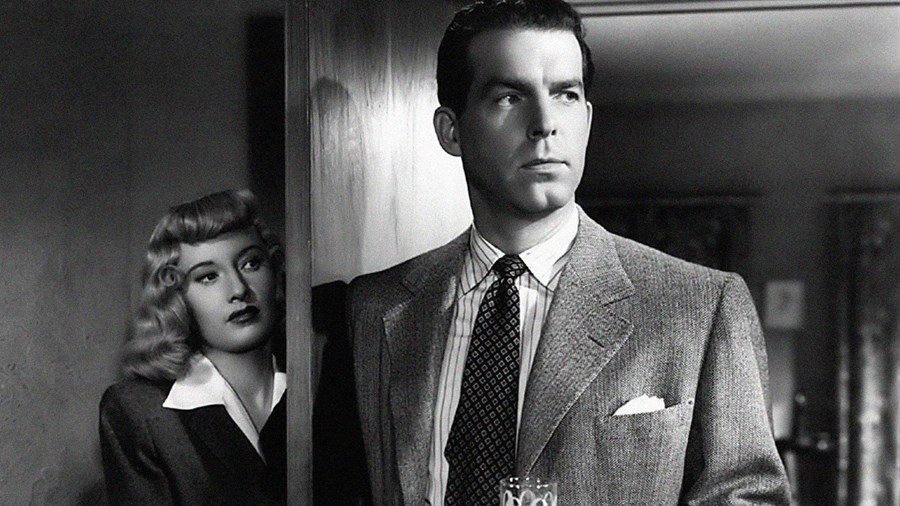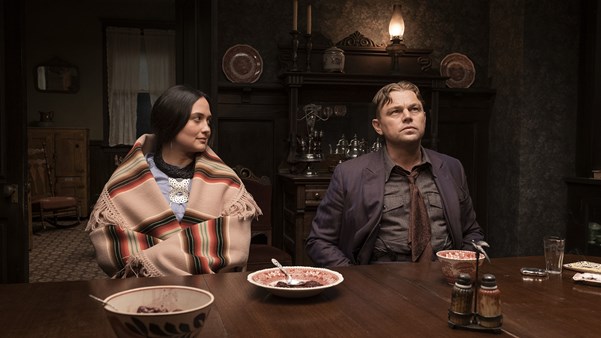Just as William Oldroyd upended the costume drama with his acclaimed 2016 debut Lady Macbeth, Eileen similarly subverts genre expectations, writes Ian Haydn Smith.

Young lovers make out in the back of a car near a frozen lake. Their body heat and heavy breath clouds the windows. But not so much that Eileen (Thomasin McKenzie), sitting alone in a car nearby, can’t watch on. For her, sexual gratification is achieved alone and, with a handful of snow, quickly suppressed. It’s a striking introduction to the protagonist of Eileen, adapted by Ottessa Moshfegh – with Luke Goebel – from her 2015 novel.
The film unfurls in a small, bland Massachusetts town. It’s 1964, but this world appears to have never left the 1950s; fashion, music and attitudes all point to an insular society unwilling to embrace – or oblivious to – change. 24-year-old Eileen lives with her father, an ex-cop, widower and inveterate drunk who rails against the world and constantly berates his daughter, often for no good reason. (It’s another great performance by Shea Whigham, who ranks as one of the US screen’s best character actors.)

Lady Macbeth (2016)
Eileen works as a junior secretary at a correctional institute for young male offenders. It’s a drab and unprepossessing place, and Eileen’s only joy there is the occasional furtive glances at a moderately attractive guard, imaging a tryst with him in front of the long queue of daily visitors. Her job is tedious, but all that changes with the arrival of Anne Hathaway’s Rebecca, who is glamorous, opinionated and more in keeping with the times than the place she has arrived in. It takes one brief exchange between the women for a connection to be made. ‘Perhaps only young women of my same conniving and tragic nature will understand,’ Moshfegh writes of the moment, ‘that there could be something in such an exchange as mine with Rebecca that day which could unite two people in conspiracy.’
Rebecca’s entrance into the story is the catalyst that transforms Eileen from a psychological study of a young woman adrift in the world into something more akin to noir. The growing bond between Rebecca and Eileen plays out like a seduction. ‘I was infatuated with her, clearly,’ Eileen notes in the novel, ‘And I felt in a way that just by knowing her, I was graduating out of my misery. I was making some progress.’
Moshfegh’s novel is written in the first person. The voiceover is a common staple of noir thrillers and with lines like, ‘It’s important to keep in mind, given what I’m about to relay, which is everything I remember from that evening, that I had truly never had a real friend before,’ Moshfegh and Goebel could have easily employed the same narration for the film. Instead, McKenzie’s performance and William Oldroyd’s impressive direction convey Eileen’s frustration with her life and the impact Rebecca has on her.

Double Indemnity (1944)
The film’s main characters perfectly fit the template of a noir tale. McKenzie plays Eileen as the dupe, the sucker who falls under the spell of an exotic stranger. It’s a role previously played by the likes of Fred MacMurray in Double Indemnity (1944), Tom Neal in Detour (1945) and Robert Mitchum in Out of the Past (1947). While Hathaway’s striking turn as Rebecca might initially resemble Lana Turner in The Postman Always Rings Twice (1946), Ava Gardner in The Killers (1946), Yvonne De Carlo in Cross Cross (1949). But then the film takes a left turn, not so much veering into uncharted territory as driving off the map altogether. That there’s more to Rebecca than the predictably lustful men in the town can see, but which Eileen senses, is evident in a bar scene in which one of the men mistakenly thinks they can take advantage of her. But that pales against what comes next.
The dynamic of Eileen and Rebecca shifts completely and just as Oldroyd upended the period drama with Lady Macbeth (2016), here he uses Moshfegh’s story to offer up a fresh take on a classic genre. But he does this in a quietly understated way. Eileen plays out like B-movie noir – the supporting film when cinemas used to offer double bills to audiences. The film is defiantly low-key and all the more rewarding for it. It withholds character psychology, leaving us to figure out the motivation behind the events that unfold. But like the source novel, it is a seductive, surprisingly savage tale that’s not so easy to forget.
WATCH EILEEN IN CINEMAS




